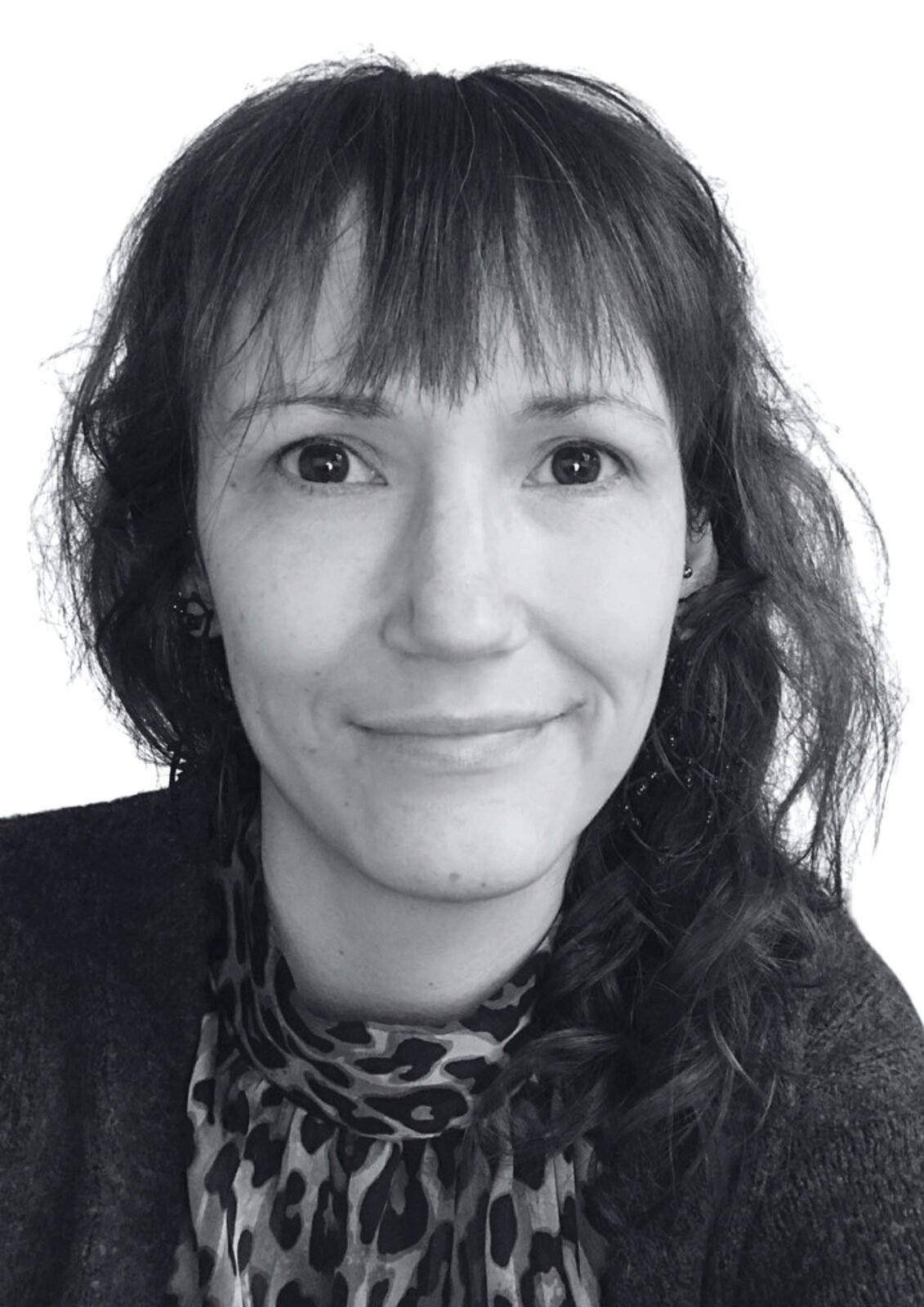
Private practice is in decline. The benefits of setting up on your own very often do not outweigh the costs, and many established physicians are now looking for partners to help them reach their life goals. Rosalind Hill spoke to physicians who’ve sold their practices to understand more about the motivations behind the decision and to industry experts about what it means for the future of aesthetics
There’s no denying aesthetic medicine is an expensive business — and not just for consumers. If you’re setting up in private practice today, you’ve likely already racked up hundreds of thousands — be it dollars, pounds or euros — on office space, a website, and marketing and that’s before you’ve even thought about investing in a skincare line, injectables or a laser. And when you do finally set-up shop and start welcoming patients, you might need to consider hiring staff to run your practice and support your work. So, in addition to being a doctor, you’re already a CHRO, a CEO, a CMO and more besides. After all that, what time is left for patients? And therein lies the dichotomy that many doctors in the aesthetic industry are faced with: serving their patients— their vocation— versus building and operating a successful business.
It’s no surprise then, that the business of aesthetics is changing. While a large proportion of clinics in both the US and UK remain sole practitioner practices (over 80% of practices in the UK alone, according to PRIME’s sources), more physicians are now looking to join a partnership. And while private practice isn’t dead just yet, it’s definitely not the lure it used to be.
‘Solo practice as a business model has long been on life support,’ said industry expert Wendy Lewis. ‘It is cost-prohibitive to open a dermatology or plastic surgery practice today when you calculate all the costs involved: rent, staffing, software, computers, equipment, laser and light-based technology, skincare, malpractice insurance, plus marketing and social media management. And for doctors who are looking for an exit strategy, are getting closer to retirement, or overwhelmed by the advent of more and more competition in their market, it makes good sense to look around at other options. The choices are simple: join another practice, bring in a partner to offset the costs of running the practice, or sell your practice to private equity (PE) or another medical group. Many doctors I know are very interested in exploring the PE options in their markets.’
Time to wake up to the trend
Private investment into the healthcare market and services is by no means new, particularly not in the US, where the very nature of access to healthcare has made it ripe for private companies to build, operate and invest in end-user services. Dermatology, gynaecology and more services have long piqued the interest of investors, with whole tower-blocks of multi-specialty healthcare providers cropping up in some of the larger cities. However, our experts agreed that medical aesthetics has been a little late to jump on the bandwagon, with dermatology really only seeing such levels of investment in the last 5–10 years.
‘The investment community has been sleepy on medical aesthetics and have just woken up,’ said Dominic Mazzone, CEO and Founder of MedSpa Partners, one of the consolidation platforms currently growing in the US and Canada. ‘Before I founded MSP with my partner Persistence Capital Partners (PCP), there was only one other small platform out there trying to do this. Almost every doctor and every PE fund told me it was impossible, and the idea of MSP was dead about four times. In the first year of raising capital, we had to tell the story a lot. In the second year, we were still performing through COVID, and the story became a lot more exciting. By year three, you could see that the industry was noticing what we and others were doing and that medical aesthetics held an interesting niche in the retail healthcare space due to its attractive growth rate, being private pay primarily without insurance reimbursement, and recession resilient.’
In fact, the consolidation machine in aesthetics is moving so quickly that it is likely to become the norm in the US — and not least because of the spiralling costs of practice overheads and physician time spent away from patient care. While only approximately 5–6% of practices are part of a larger entity at this point, with up to 9000 medical spas and 14,000 aesthetic practices in the market, there is a lot of business to be done.
Drew Fine, Chief Commercial Officer at Advanced Medaesthetic Partners, touted as an alternative to private equity consolidation firms, agrees. ‘It’s very early in the trend, but I think it is going to continue, especially because the US aesthetics market has proven pretty resilient. And I think the reason that we’re seeing our growth is because when you’re a small business owner, you have to deal with everything, and it’s hard to be an expert at everything. Medical practitioners don’t love making sure the payroll runs every week; they don’t love making sure their accounting is organised; and they don’t love having to deal with marketing agencies on figuring out digital marketing.’
And that’s precisely the offer of consolidation platforms like AMP and MSP: they will bring the HR expertise, the payroll expertise, the marketing expertise, and the management professionalisation so that the physician can get back to their calling. And not only that, but they have the funds to invest in clinics to further drive profitability.
‘This is the future of aesthetics as we know it in 2023,’ said Lewis. ‘There are numerous roll-ups and chains popping up all over the US and EU now as well. These well-funded medspa chains present stiff competition for solo practitioners in the marketplace. They are much less expensive to manage and run because they have buying power for supplies, products, lasers, injectables, equipment, etc. They also offer savvy direct-to-consumer marketing programmes that resonate with today’s aesthetic patients. I think it will change the face of this industry exponentially. Aesthetic medicine is not the only target private equity groups have their eye on. We have seen roll-ups across medical specialties, from gastroenterology to OB-GYN, infertility, dentistry, podiatry and more. The next frontier for those who can afford it is concierge medicine.’
Selling up doesn’t mean losing autonomy
From her small office space based in Midtown, New York, Dr Doris Day has been running her practice for the best part of 25 years, and has become an internationally renowned and well-respected physician.
‘I’ve never worked for anybody; I’ve always done my own thing and been my own boss,’ she told PRIME. ‘I’ve been fortunate over the years to have had excellent growth, but my office is too small to have an HR department or a marketing department. But that means I am it, and I have to do it all: I am HR. I am IT. I am marketing, and it all takes a lot of time. As I’ve gotten older, and I have added projects that I’m excited about doing, I found that it’s harder for me to get to all the things that I love and want to do because I have to do a lot of the admin side, which is often tedious and time-consuming. And also, I have ideas for expansion and growth that I don’t have the time to fully invest in and build on my own.’
Dr Day, along with Drs Shino Bay Aguilera and Steve Dayan, has joined MedSpa Partners.
‘What’s important to me is to maintain my autonomy, and feel like I run my day-to-day operations, my hours, who works in my office, and how many patients I see,’ she said. ‘But I also have people now when I need something— I have an HR department, a marketing team, and they respond quickly, so now I can go home and focus on the things that I want.’
Chicago-based plastic surgeon Dr Dayan agreed: ‘I was managing every aspect of the business. HR law in Chicago is tough and that became a full-time job in itself, especially through COVID. It was non-stop, and I wasn’t enjoying managing those issues.’
In fact, Dr Dayan has often spoken candidly of the sacrifices he’s made throughout his career as he has built his practice. Writing in Modern Aesthetics last year, Dr Dayan shared his story of missed soccer games, dance recitals and family barbecues while putting his heart and soul into building a viable business1. ‘It’s very difficult to go into private practice— I was in debt for so long that I didn’t get my real first paycheck until I was in my 40s.
Unless you’re independently wealthy or willing to take the financial burden, then it’s just not viable to set up practice today. That’s not to say that private practice is totally over, but you do have to be willing to accept the sacrifices that come with it.’
But for those not willing to accept the sacrifices, unable to afford the costs of setting up privately, or looking at different priorities and life events, the alternative option is becoming more attractive. And perhaps most importantly, the patient experience has not been compromised in the name of increasing productivity and profit, as one might expect from private investors.
‘I no longer stress about the need to increase the volume of patients in order to offset the ever-increasing prices of injectable fillers, toxins, and energy devices,’ said Dr Aguilera. ‘This allows me to spend more time with my patients, which is very important for me. It also allows me to have a lower level of stress, and my visits with my patients are very personable and enjoyable.’
Likewise, Dr Michael A. Fiorillo, a New York-based board-certified plastic surgeon, who has joined Advanced Medaesthetic Partners, has been grateful for the gift of time. ‘I can now more effectively focus on the things I love — my patients, mentoring the other providers in my practice, looking for growth opportunities — because I don’t have to spend as much time on the operational day-to-day,’ he said.
And for others, it’s been thinking about an ‘exit strategy’ — what happens to that hard-earned practice that you’ve built up for decades when you’re ready to retire, and if family haven’t followed in your footsteps? Georgia-based Dr Steven F. Weiner told PRIME: ‘I was at a place in my life and practice where I wanted to make sure my employees and staff were taken care of for the long run. I also love aesthetics and wanted to be part of something bigger to leave a memorable footprint on the industry for years to come. I love the access I now get to the best-in-class experts with the company. We could do some amazing things before, but now we get access to the scale benefits that come from the larger organisation to help us grow more effectively and support all my providers.’
The view from the UK
While the UK market, in terms of private investments in healthcare and aesthetics in particular, isn’t quite as advanced as the US, with some experts putting its maturity at least 10 years behind, there are early signs of a similar trajectory. The Sk:n clinic chain was acquired by private equity group TriSpan for a reported £35 million in 2019; The Cosmetic Skin Clinic was similarly acquired by Blue Gem Capital; and firms such as KKR Capital, which acquired Laser Clinics Australia in 2017, are now rapidly expanding into the UK and Europe.
However, one key challenge with the UK market is its fragmentation. Max Taylor, Associate at Mansfield Advisors, a boutique healthcare consultancy in the UK with a special interest in the aesthetic industry, told PRIME: ‘It’s a very different market to the US. On the surgical side, I think private equity investors want a market that isn’t there yet, and that’s because there is a perception that the surgical cosmetic market is growing and that is simply not the case. Data from BAAPS on the volumes of cosmetic surgeries shows that it’s been pretty stagnant for years now. Conversely, on the non-surgical side, there is limited data because it’s such a complicated and fragmented market. But anecdotally, non-surgical volumes are increasing.’
That said, Taylor told PRIME that there is certainly more activity in the UK market than there was 10 years ago, and it may well be the case that the UK follows where the US leads in this regard.
‘It’s definitely a growing market and it remains to be seen where it goes. PE investors care about getting it right and having the right clinically qualified people to do it. They have to set higher prices to achieve this and therefore limit their customer base because people will go elsewhere to the cheaper options, especially for toxin and fillers. Also, investors want to roll up and take on more clinics so they can build a large platform to sell privately. There’s multiple arbitrage, so if you’re a larger group, you can sell for a higher price. The other part of that is you can also create synergies when you have more clinics, so you therefore have more bargaining power in what you buy; you reduce your cost base and keep a larger portion of the profit. That’s why private equity-acquired clinics seek to acquire more clinics and build a more profitable platform.’
In the UK, private investment in healthcare is perhaps more common in specialisms such as IVF, which as a market, has matured and structured itself more formally over the years. And the prime reason that investors like it is because it’s self-pay — precisely the offer of the aesthetics industry. But on the flip-side, there’s a lot of competition and in the UK in particular, the current lack of regulation likely has prospective investors feeling a little anxious.
Advice for others
If you’re weighing up whether joining a partnership is the right route for you, it definitely shouldn’t be rushed and finding an acquiring partner that’s the right fit is the most important decision.
‘All platforms are not created equal,’ said Dr Aguilera. ‘If you just want money, that’s one thing, but having a partner that you actually have a fit with that isn’t going to treat you like just a number is what’s most important to me. I have created a wonderful place where the vibe is loved by all employees and patients. I didn’t want someone to come and destroy what I’ve built; it would have been like selling my soul to the devil.’
Dr Dayan agreed: ‘Choose the group that’s the best fit and has the most potential–infrastructure, track record, like-minded physicians, who’s on the board, the vision for the future, and how much control/equity you’ll have are all important things to weigh up.’
Along with that, the experience of the partnership also means a lot — do they have experience in the aesthetic industry? What can they offer you beyond monetary support? What’s their model? Are you able to tailor it so that it satisfies what you’re looking for in your career, your life?
‘Look carefully at the leadership team, the financial track record, and the strategy of the company,’ said Dr Fiorillo. ‘If those three things align with your goals, you likely have found a great partner. It’s important that whoever you partner with is going to steward the amazing business you have built with the same care, appreciation and consideration you did.’
‘Make a list of what’s important to you and know your value,’ Dr Day advised. ‘Talk to more than one group and to colleagues you trust in those groups before you sign with anybody, and be willing to walk away. It doesn’t matter if you’re about to sign; even at the very last second, just be willing to walk away. If you’re willing to walk away from a deal that you don’t feel is right for you, you’ll know that you’re going to make the right deal when it’s time. There’s no perfect deal or perfect practice, but if you follow your list and then follow the instincts that helped you build your successful practice, you will be happy with the deal you make.’
Conclusions
Private investment and partnership consolidations in aesthetics certainly aren’t going anywhere, and if PRIME’s experts are right, then this will become the predominant market model for the aesthetic industry, and not just in the US. With spiralling overheads and set-up costs for all practices now the norm, private equity roll-ups offer a more efficient business model for anyone and allow physicians to get back to what they do best and what they love — caring for their patients.
Even for newly qualified physicians just getting started out, unless you’re independently wealthy, then joining a group is the most practical solution. And with that, the face of healthcare will undoubtedly change.
‘I think aesthetic doctors must acknowledge the current trends in the industry and accept the fact that the model they may have started out with is not practical today,’ said Lewis. ‘They have to at least look at their options and have a well-thought-out plan for future growth and success. Even young physicians just starting out should consider all options. Many young doctors may join a PE-backed group practice set up early in their careers. It does not necessarily mean that they will spend their entire life in medicine in that mode. The industry is in constant flux, and new opportunities will arise all the time. Aesthetic medicine is a very fast-paced and exciting space to be part of. It certainly keeps me on my toes.’
References
1. Dayan S. Why I sold. Modern Aesthetics, Sept/Oct 2022. Available at: https://modernaesthetics.com/articles/2022-sept-oct/why-i-sold (accessed 24 April 2023)







